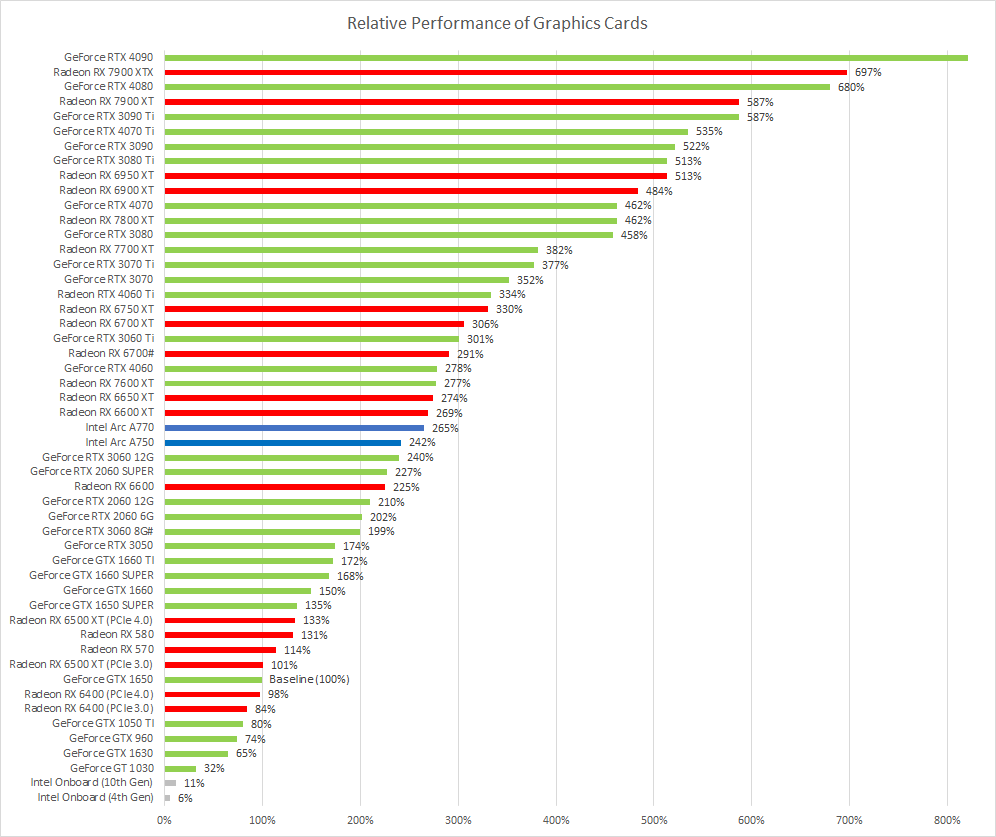Home/Office Usage
For most users that aren’t into playing games, the onboard or default integrated graphics support is more than adequate for watching movies (Youtube/Netflix) or general home/office use, they will even support multiple monitors. If you want something a little more advanced, or just need additional digital outputs then the GT1030 is a power-sipping alternative with a good balance of price/performance for general use.
Gaming/Advanced Usage
When it comes to gaming (or engineering, or other advanced rendering tasks), the graphics card drives the system performance more than any other component. We sell a range of carefully selected graphics cards. There are so many different makes, models and options that it’s often very difficult to compare. We recommend using graphics cards from the list below for reliable, cost effective gaming performance.
We’ve done a comprehensive round-up of all the current popular (and available) graphics cards in the market that have 2GB+ of ram, and offer good value for money and relative performance.

At the budget end we recommend the RX580 as good entry-level gaming card capable of 1080p and 60fps at low-medium detail settings (#Note 2) and offer a big step up in performance compared to most integrated graphics cards. We recommend customers aim for the the higher performing and excellent value-for-money RX6600 series graphics card or higher where budget permits.
Price conscious buyers would be well served by the GTX1660 options which are both affordable and offer decent performance gains over the RX580 in many games.
For mainstream gaming we recommend either the RTX3060 or RX6600 which both offer exceptional value for money performance delivering high frame rates 150fps+ at high level detail settings at 1080p (#Note 2).
For graphics card options from the RTX3060 and up, we recommend pairing with a current generation (Intel/AMD) “NEW” system to avoid the CPU becoming the system bottleneck.
Our recommendations:
- Basic home/office use: Onboard graphics or GT1030
- Entry level gaming: RX580
- Cost effective performance: GTX1660 Super/TI or RX6600
- Advanced gaming: RTX3060 or RX6600 or above
- Performance Gaming: RTX4060Ti, RX7700XT above
- 1440p Gaming: RTX4070 or RX7800XT or above
- 4K Gaming: RTX4070Ti or above
Notes:
- if you’re using a small form factor (SFF) desktop case, only the GT1030, GTX1050TI, RX6400 and GTX1650 (non-super version) are available in low profile options.
- performance figures stated here are relative and indicative only. FPS and detail level settings can vary significantly depending on system configuration, game or application being used, monitor support and other factors outside our control.
- RX6500XT and RX6400 performance is limited to x4 bandwidth and will perform slower in PCIe 3.0 systems. For faster performance PCIe 4.0 systems are recommended from Intel (11/12th Gen) and AMD (3xxx and 5xxx when used on B550/X570 motherboards, but excluding AMD 5x00G systems with integrated graphics).
Data Source: www.techpowerup.com. We selected the most common graphics cards from each major vendor to include on this summary graph using the techpowerup average performance percentage and providing a relative comparison to the GTX1650 baseline (100%). Actual performance results can vary depending on game and/or task and may differ from these rankings listed here.